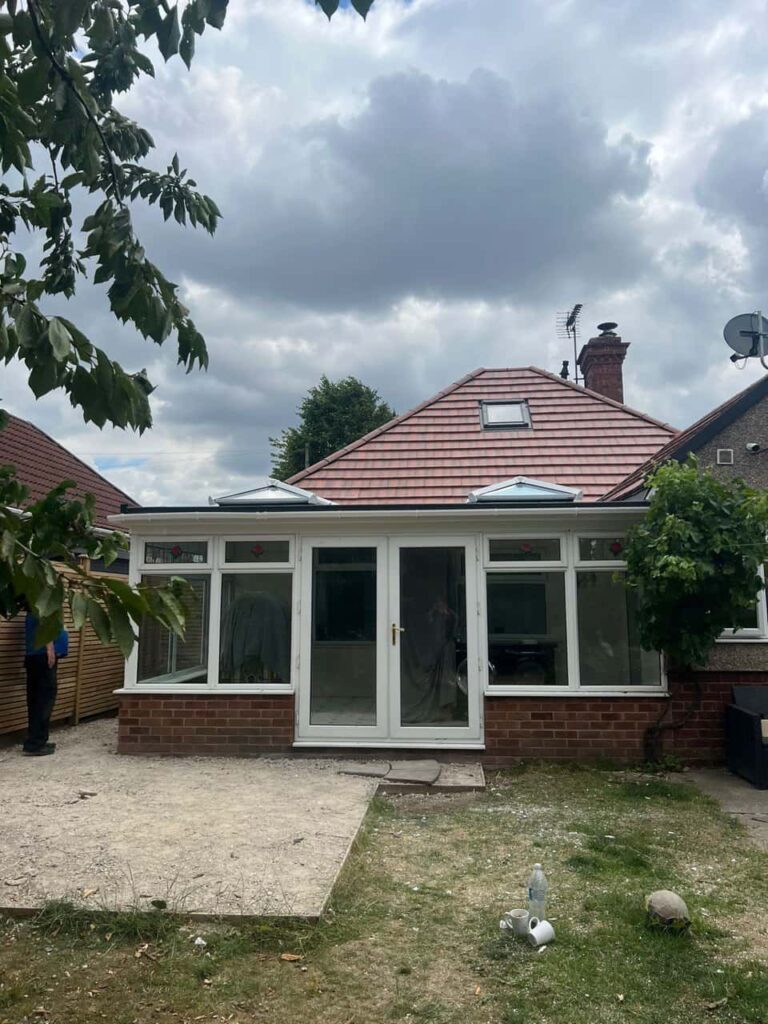Concrete tile roofs are known for their strength, durability, and ability to withstand the varied and often unpredictable weather conditions in the UK. However, like any roofing material, they can develop issues over time, which, if left unaddressed, can lead to costly repairs. At Aldridge Roofing Repairs, based in Aldridge, West Midlands, we specialise in providing expert roof inspections, repairs, and maintenance to ensure your concrete tile roof stays in optimal condition. In this blog post, we’ll guide you through the essential checks you should perform to spot damage early and keep your roof in top shape.
1. Check for Cracked or Broken Tiles
Over time, concrete tiles can become cracked, chipped, or broken, especially in areas exposed to high winds, extreme temperatures, or heavy rainfall. Damaged tiles should be addressed immediately to prevent further damage to your roof and home.
- Visible cracks or chips: Inspect the surface of your tiles regularly for any visible cracks or chips that may allow water to infiltrate the roof structure.
- Broken tiles: Missing or completely broken tiles create vulnerabilities in your roof, making it prone to leaks and weather damage.
If you notice any cracked or broken tiles, it’s essential to have them repaired or replaced promptly to avoid more serious issues.
2. Inspect for Moss and Algae Growth
Moss and algae are common on concrete tile roofs, especially in damp, shaded areas. While they may not seem harmful at first glance, they can cause significant damage over time.
- Moss growth: Moss can trap moisture on the roof tiles, leading to the deterioration of the concrete and causing tiles to weaken or crack.
- Algae build-up: Algae can contribute to staining on tiles, and if left untreated, it can result in long-term damage to the roof’s surface.
Regularly cleaning moss and algae from your roof is essential to maintain its integrity and prevent damage. In some cases, professional cleaning may be necessary to ensure the tiles are properly treated.
3. Examine Roof Valleys and Flashing
Roof valleys, where two slopes of the roof meet, and the flashing around chimneys, vents, and skylights are vulnerable areas that require special attention. Over time, flashing can become worn or damaged, and debris can accumulate in roof valleys, leading to blocked drainage and potential leaks.
- Damaged or cracked flashing: Flashing protects the joints of your roof, but over time it can degrade, crack, or become loose, allowing water to penetrate the roof.
- Clogged valleys: Debris such as leaves, twigs, or moss can accumulate in roof valleys, preventing proper water drainage and leading to leaks or water damage.
Having your roof valleys and flashing inspected regularly ensures that they remain functional and free of debris, helping to maintain your roof’s performance.
4. Look for Signs of Water Leaks
Water leaks are one of the most obvious signs of damage to a concrete tile roof. While concrete tiles are highly resistant to water, leaks can still occur if the roof is not properly maintained.
- Water stains on ceilings or walls: If you notice water stains or damp patches inside your home, this could be a sign that your roof is leaking.
- Sagging or soft spots: Dampness in the roof structure can lead to sagging or soft spots, which are clear indicators that the roof needs attention.
If you experience any water leaks or damage to the interior of your home, it’s crucial to have your roof inspected as soon as possible to prevent further structural issues.
5. Check for Roof Sagging or Unevenness
A roof that is sagging or uneven can indicate a more serious problem, such as structural damage or the weakening of the roof’s supporting framework. If you notice any visible sagging or dips in the roofline, it’s important to have your roof inspected immediately.
- Uneven roofline: If your roof appears to be sagging or has a noticeable dip, this could mean that the support beams or rafters have been compromised.
- Visible structural issues: Any signs of structural damage, such as cracks in the walls or ceilings, should be investigated promptly to prevent more extensive repairs.
A professional roofer will assess whether the damage is related to the roof’s structure and recommend the appropriate course of action.
6. Check for Debris and Fallen Branches
If you have trees near your home, it’s important to check for fallen branches or debris that could have landed on your roof. Overhanging branches can damage tiles and cause scratches, cracks, or even breakage if they fall.
- Fallen branches: Large branches or debris can cause immediate damage to the roof surface.
- Overhanging trees: Trees that are too close to your roof should be trimmed regularly to prevent branches from causing harm during storms or high winds.
Regularly inspect your roof for debris and branches that may cause damage and address any potential risks early to prevent further issues.
Conclusion
Concrete tile roofs are an excellent investment for your home, offering durability, weather resistance, and long-term protection. However, like any roofing material, they require regular inspections to ensure they remain in good condition. By performing the checks outlined in this article and addressing issues promptly, you can prevent significant damage and extend the lifespan of your roof.
At Aldridge Roofing Repairs, we specialise in the maintenance, repair, and inspection of concrete tile roofs in Aldridge, Leicestershire. If you’ve noticed any of the signs mentioned in this article or if you’re due for a roof inspection, don’t hesitate to contact us. Our expert team is here to help ensure your roof remains in optimal condition, providing your home with the protection it needs. Contact us today to schedule an inspection or get a free, no-obligation quote.
Call us on: 01922 661 597
Click here to find out more about Aldridge Roofing Repairs
Click here to complete our contact form and see how we can help with your roofing needs.

